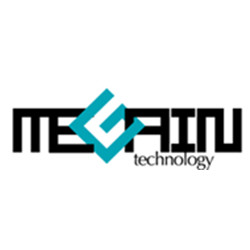Nubeprint Releases New MPS Compliant Report
Scope and limitations of the analysis:
The analysis focuses on the ability of the printer to provide sufficient data so that an advanced MPS technology can potentially drive the services. The quality of the data provided is ignored on purpose. The analysis works under the assumption that the data is homogenous and accurate. The reader is advised that a high MPS compliant ratio is not enough to ensure a profitable business free from unneeded toner deliveries, and toner waste. It is absolutely recommended to use Nubeprint MPS technology to obtain the best results of an automatic order fulfillment, and a lean management process implementation. This, in short order, will result in higher margins for your MPS and cost per copy businesses.
The analysis does not differentiate the type of device as long as the document output is homogeneous: an office printer or copier, no matter what its size is (letter, A4, A3, A0…). As a consequence, the Report includes laser printer, inkjet and solid ink printers, ribbon (including label printers) or large format printers (LFP).
This new edition includes products from 41 manufacturers. The LFP models are from four different manufacturers. The Ribbon printers belong to 12 different manufacturers.
Though the number of LFP and Ribbon equipment is small compared to the office printers and copiers, their management is a real burden to the customer. The demand for the MPS service provider to handle these devices is high, and is a way for them to gain new customers and protect existing ones by being the sole service provider for printing equipment in each account.
Population

The analysis was conducted with 2,100 document output device models selected among the most commonly found in the office market, expanding the previous edition again by 300 models. New manufacturers in the list are: Printronix and Source Technologies.
The models analyzed are classified in 6 different types: monochrome printers, color printers, monochrome MFP (multifunctional including copiers), color MFP, large format printers (LFP) and ribbon printers. 59% of the population analyzed is MFP while 36% is printer, 4% is LFP and 1% is ribbon. Overall 44% is color and the remaining 56% is monochrome, excluding LFP and ribbon.

Market compliance
Overall
The population analyzed shows that 36% of the models are full MPS compliant, while 31% have some major limitations, including 3% that are not compliant, meaning not being appropriate for MPS. Non-compliant models remain exceptional. But as the number of models included in the analysis grows, this % remains pretty stable around 3% value. In total, 90% of the manufacturers do carry models that are either not MPS compliant and/or show relevant compliance issues. Overall, 64% of the models expose the MPS service provider to an elevated risk that translates in higher cost, lack of cost control and unexpected loses. LFP and ribbon printers are the biggest contributors to non-compliant MPS printer.

61% of models do require an advanced MPS management technology to compensate for their lack of capability in MPS, and 3% can simply not be managed. In other words, the majority of the models analyzed expose the MPS service provider to risks in terms of the quality of the service, profitability of the business and therefore competitiveness. These models experience significant limitations and inefficiencies in terms of identifying with accuracy their needs of supplies and service, and the amount of resources to manage them. As a consequence, for a printer or copier of any kind to be suitable for auto-fulfillment, an MPS monitoring tool is not enough because the alerts that a system of this kind generates cannot be trusted (the proportion of “false” alerts causing the delivery of unneeded cartridges varies from 1 to 3 to 4 to 1, depending on the model and other aspects); and because its lack of capacity to proactively notify about the needs of all cartridges of each device (toner, drums, waste bottles, fusers and any other). Only by using an advanced yield management tool such as Nubeprint Enterprise, the MPS service provider can automatically manage the deliveries of supplies of any kind, and have a perfect control that they are being 100% used by the device of the customer
Per type of device
The limitations found per type of device make the single function printers as the most MPS friendly devices: around 40% are full MPS ready, compared to 27% of the color and monochrome MFP.

Color devices (both MFP and printer) in general have the highest level of compliance with just 16% showing major limitations. Monochrome MFP’s show the worst results in office printing equipment (52% showing major issues in MPS). In general, 45% of monochrome printers and copiers show major issues in MPS.
LFP low-compliant ratio is at 68%, while Ribbon printers show very little compliance, with more than 76% of the models reporting major issues or lack of compliance.
Per manufacturer
The analysis of compliance per manufacturer shows a very heterogeneous market. A similar heterogeneity is found at a vendor level. Indeed, the majority of them report a plurality of compliance that depends on the model, as shown in the chart below.
The chart provides the MPS compliance for the different models analyzed for each manufacturer.
The greener the bar of a manufacturer, the more MPS friendly are its printers and copiers. There is no significant difference if the manufacturer origin is from the copier industry or printer industry.


The radar graph determines how each manufacturer is positioned compared to others. The Index considers each printer model limitation based on how it influences an efficient and profitable delivery of MPS services.
The delivery of MPS services focuses on 3 aspects: the quality of the service, the control of the costs and their follow-up. The goal of the service provider is to obtain the highest profitability and the automation of all recurrent tasks as a way to gain efficiency and control the quality of the service to the customer.
The closer a manufacturer’s index is to the center of the grid, the more MPS compliant its products are, and the more suitable they are for an MPS portfolio. The Index is only calculated for those manufacturers for which a sufficient number of models have been tested.
For more information about the report:
www.Nubeprint.com
email: info@Nubeprint.com





Leave a Comment
Want to join the discussion?Feel free to contribute!